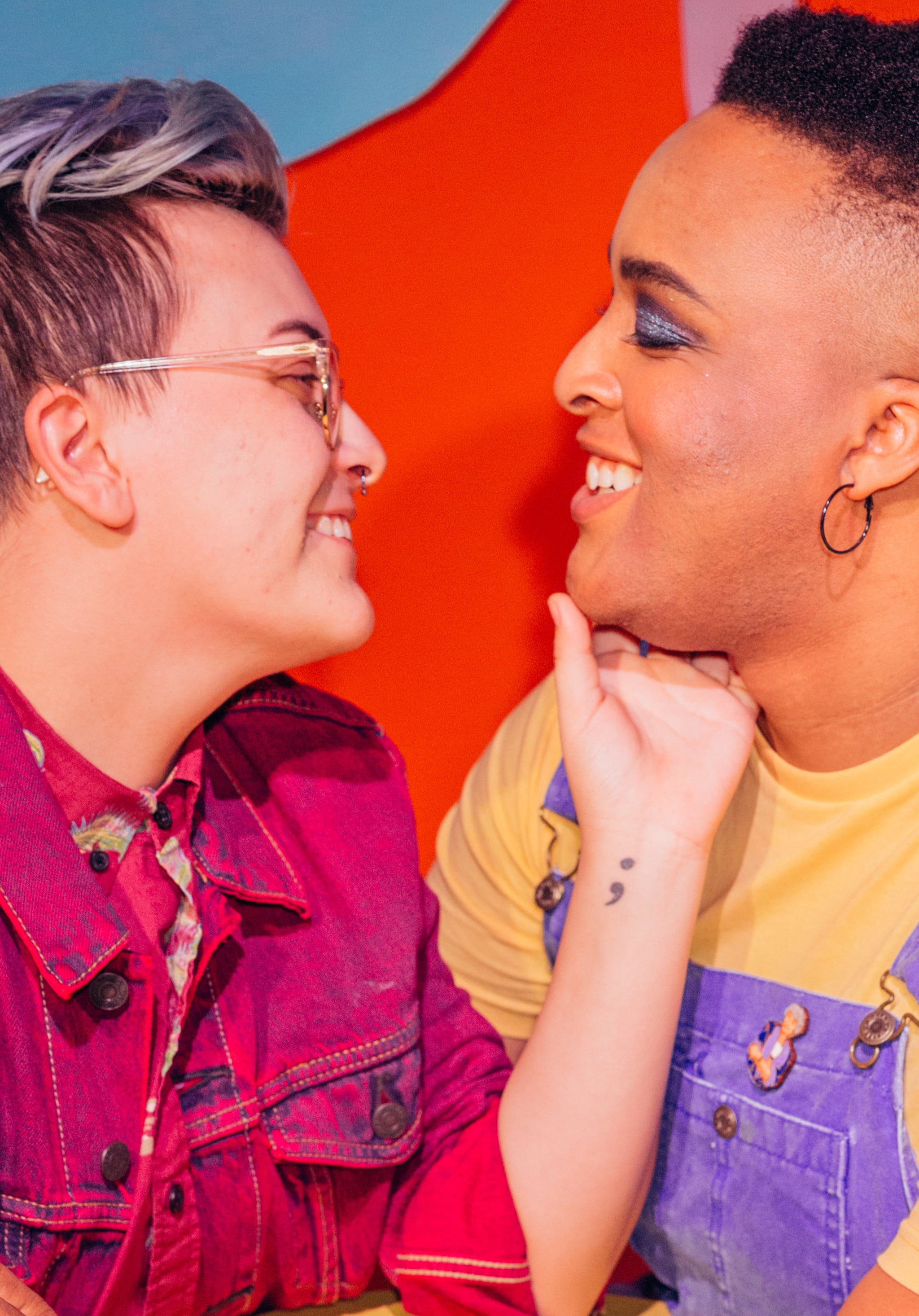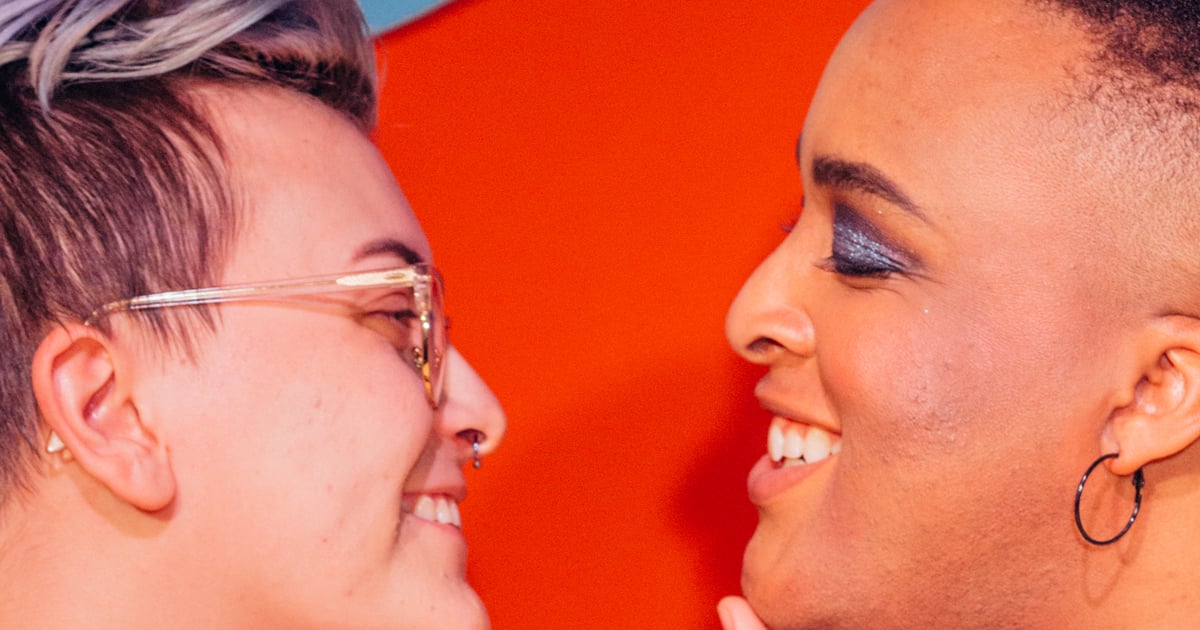
When it comes to the words we use to describe our sexual or romantic orientation, the possibilities are always expanding. After all, an individual’s attraction preference can go way beyond being just “gay” or “straight.” One word that you may be unfamiliar with is “biromantic.” This is a label used to describe people who “experience romantic or deep emotional attraction, affection, or love for two or more genders,” certified sex therapist Aliyah Moore, PhD, says.
Moore says that while being biromantic can mean you’re attracted to more than two genders (for example, men and women), you could also be attracted to many genders. Maybe it’s men, women, and nonbinary people; maybe it’s women, men, and those who identify as transgender. The point is that you can be attracted to two or more genders.
Whether you’re an ally curious to know more or you’re wondering if this label might apply to you, here’s everything you need to know about biromanticism, according to experts.
What Does It Mean to Be Biromantic?
Simply put, being biromantic means “an individual has the capacity to have romantic attraction toward two or more genders,” Wardeh C. Hattab, LCSW, says. It’s important to clarify that biromanticism is a romantic orientation, meaning it’s used to describe someone’s romantic preferences, not their sexual preferences. Romantic preferences are about who someone would like to date, marry, fall in love with, or share deep conversations with completely outside of sex.
Most people have both a sexual orientation and a romantic orientation, and while your sexual orientation and romantic orientation can match, they can also be different. For example, someone can be biromantic on the romantic spectrum and asexual, meaning they don’t experience sexual attraction on the sexual-orientation spectrum.
What Are Some Signs You Could Be Biromantic?
There is no set list of signs pointing to whether someone is or isn’t biromantic. It comes down to understanding your romantic preferences and deciding whether or not the label resonates with you. While there is no definitive way to know if you are biromantic, here are some potential signs that you might be, according to experts:
- You see yourself having a long-term relationship with someone regardless of their gender. “Visualizing having a long-term partnership with someone of any gender is a good sign that you’re biromantic. But of course, you could be more comfortable with specific gender groups over others,” Moore says.
- You have the desire to hug or cuddle people of varying genders without furthering physical contact to sexual or erotic touch, Hattab says.
- You have a crush on someone whose gender isn’t the same as what you’re used to. “Even if your romantic feelings for these people aren’t reciprocated, this could still signify that you’re interested in more than one gender,” Moore says.
- You have conflicting feelings toward another gender. Moore says that like any romantic or sexual orientation, “bi” feelings can be confusing: “However, these feelings are entirely normal.” You’ll gain clarity when you actually start to explore your feelings, connections, and desires for people of different genders.
What’s the Difference Between Biromanticism, Bisexuality, and Demisexuality?
The biggest difference between biromanticism and bisexuality is that biromanticism falls on the romantic-orientation scale, while bisexuality falls on the sexual-orientation scale. This means that you can be biromantic and bisexual at the same time. Being biromantic means you are romantically attracted to two or more genders, while being bisexual means you are sexually attracted to two or more genders. “You can still be biromantic without being bisexual, and vice versa. You can even be romantically attracted to more than one gender (biromantic) but only want to have sex with people of the opposite gender (heterosexual),” Moore says.
Demisexuality also falls on the sexual-orientation scale. “Demisexual people are individuals who only feel sexually attracted to someone if they’ve gotten to know that person and developed a strong emotional connection with them,” Moore says. As for the difference between demisexuality and biromanticism? “Being biromantic entails who you want to form a romantic relationship with (i.e., people of multiple genders), while being demisexual has to do with who you want to have sex with,” Moore says. “Although there is an emotional aspect to both biromanticism and demisexuality, emotions from [being biromantic] don’t have to lead to sex.”
What Is the Biromantic Flag?
The biromantic flag looks the same as the bisexual flag, with one minor difference: a white heart in the top-left corner. This represents romantic attraction, Moore says. As for the colors, “the pink at the top of the flag represents pride and solidarity, the purple color alludes to the slang term ‘purple menace’ for bi+ people, and the blue is a representation of genders overlapping,” Moore says. “Overall, the mix of colors represents attraction to different genders.”
For more resources on what it means to be biromantic, check out the Bisexual Resource Center, which, according to Moore, “is a great information source and support center for the queer and bi+ community, especially for biromantic and bisexual folks.” You can also visit the Biromantic subreddit for information and support.
